We're implementing kendo for angular in our project. We have an existing project that is using kendo-upload which immediately fires a call to the server, but I can't do that for this page.
The page is for an employee to upload a resume. They may have an existing resume and will need to be asked if they want to replace it first, and they are given a field for entering a description. Thus, I think I need to use kendo-fileselect and potentially trigger a dialog (are you sure you want to replace?), and send along the description and employee's ID on a button click. So I've created an object to carry this data.
You can see that the object is populated when it calls the API:
But when I try to call the API method, I get an error:
Failed to load resource: the server responded with a status of 400 (Bad Request) [http://localhost:6300/api/employee/resume]
Relevant code is below.
Server-side:
public class EmployeeResume
{
public int ResumeId { get; set; }
public int EmployeeId { get; set; }
public DateTime CreatedDate { get; set; }
public string Description { get; set; }
public byte[] FileContent { get; set; }
public string FileName { get; set; }
}
[HttpPut("resume")]
public async Task<IActionResult> UploadResume([FromBody] EmployeeResume resume)
{
if (resume == null)
{
return BadRequest();
}
return Ok();
}
Client-side:
// Model
export interface EmployeeResume {
createdDate?: string;
description?: string;
employeeId: string;
fileContent: any;
fileName: string;
resumeId?: string;
}
// CHILD component
// -----------------------------------------------------------
// Kendo FileSelect in template
<kendo-fileselect
formControlName="uploadFile"
[restrictions]="uploadRestrictions"
[multiple]="false"
(select)="selectEventHandler($event)">
</kendo-fileselect>
// Sets a component property to the selected file
selectEventHandler(e: SelectEvent): void {
this.uploadfile = e.files[0];
}
// When upload button is clicked, create the
// resume object and emit an event to parent
upload(): void {
if (this.uploadfile.validationErrors) return;
const thisComponent = this;
const reader = new FileReader();
reader.onload = function (ev) {
const request = {
description: thisComponent.f.description.value,
employeeId: thisComponent.employeeId,
fileContent: ev.target.result,
fileName: thisComponent.uploadfile.name
} as EmployeeResume;
thisComponent.onUpload.emit(request);
}
reader.readAsDataURL(this.uploadfile.rawFile);
}
// PARENT component
// -----------------------------------------------------------
// Template
<app-employee-resume
[employeeId]="(employeeId$ | async)"
(onUpload)="uploadResume($event)">
</app-employee-resume>
// Handler
uploadResume(resume: EmployeeResume) {
this.svc.upsertResume(resume)
}
// 'svc'
upsertResume(resume: EmployeeResume) {
return this.http.put(`${this.apiUrl}/employee/resume`, resume);
}


